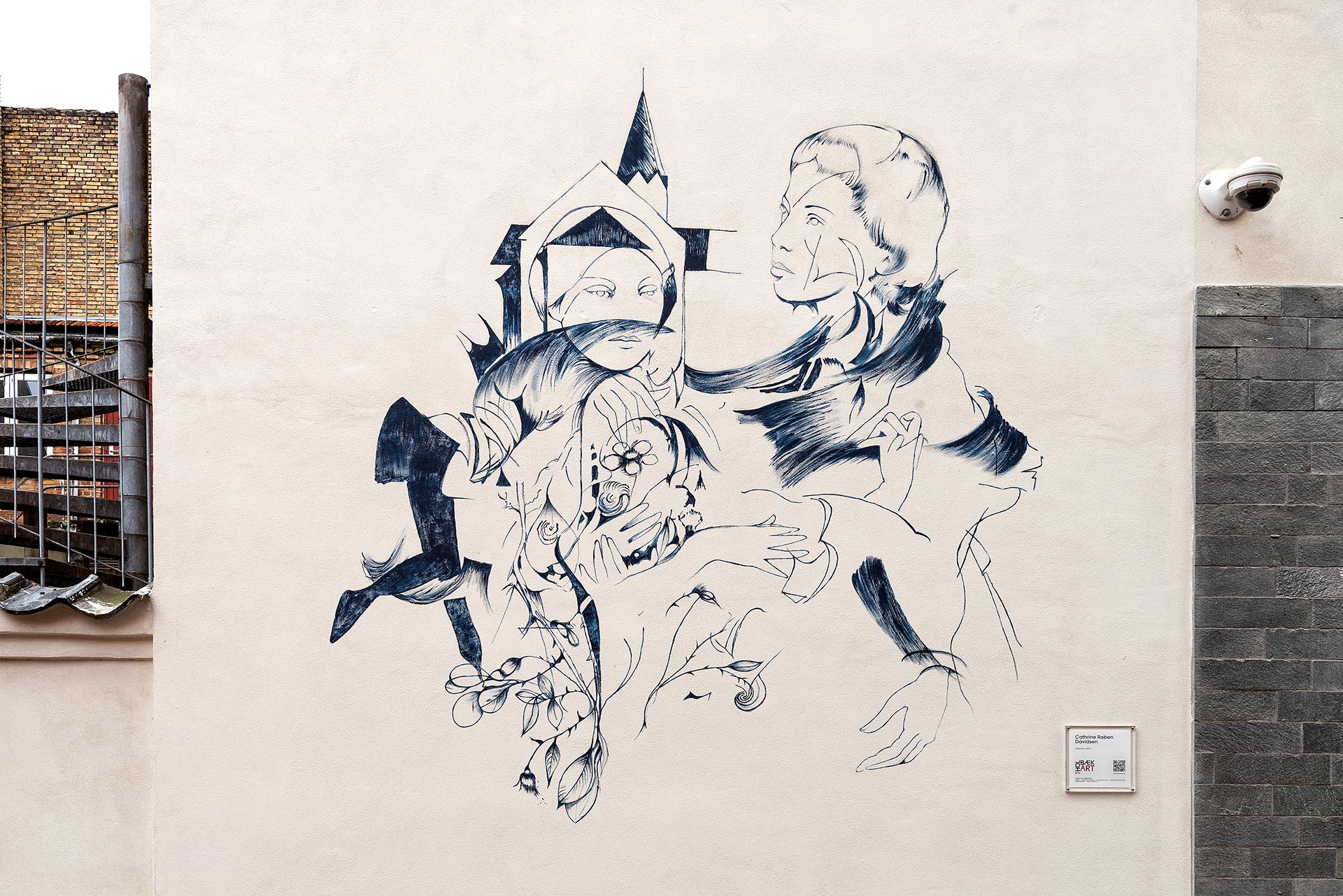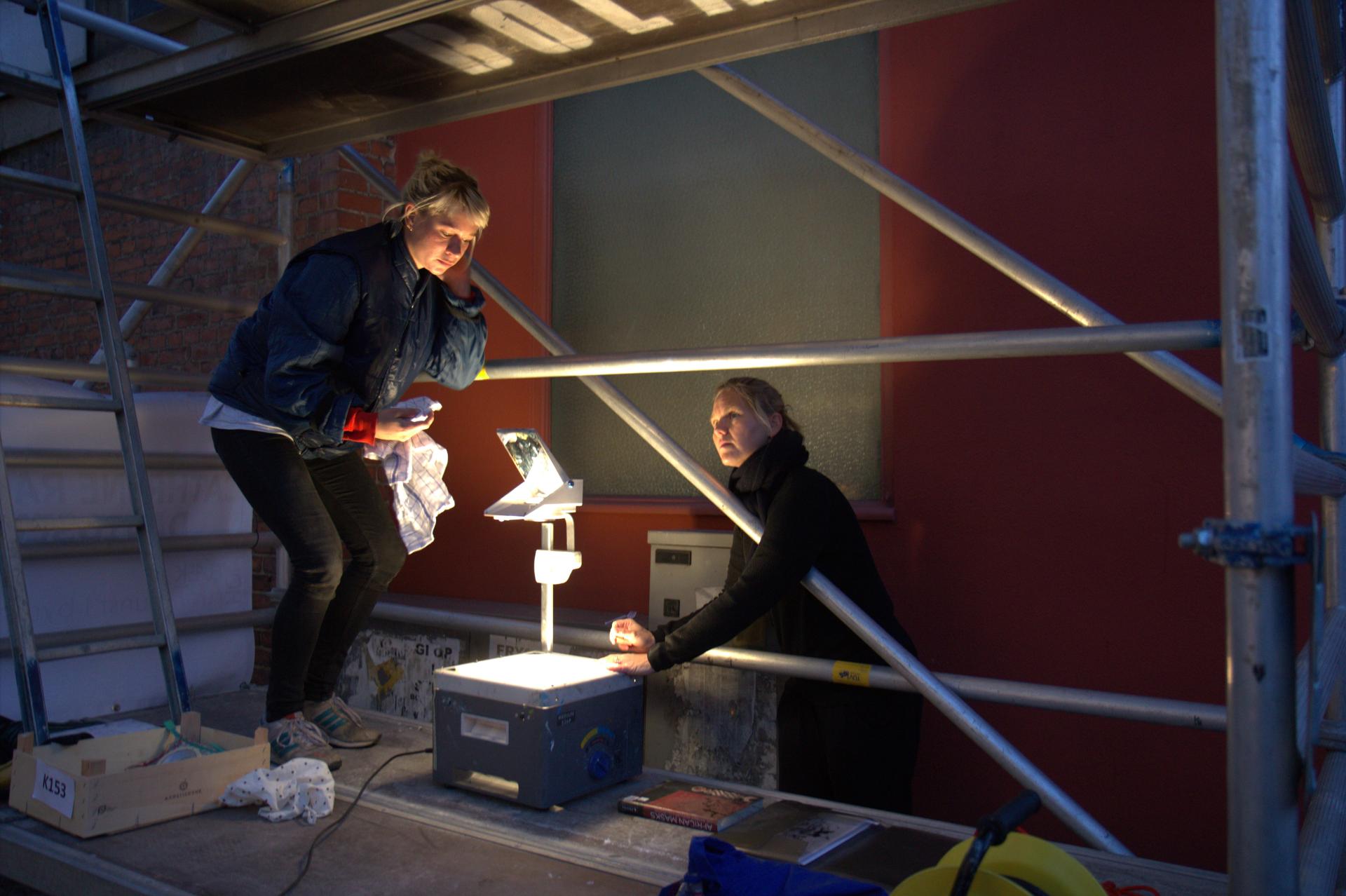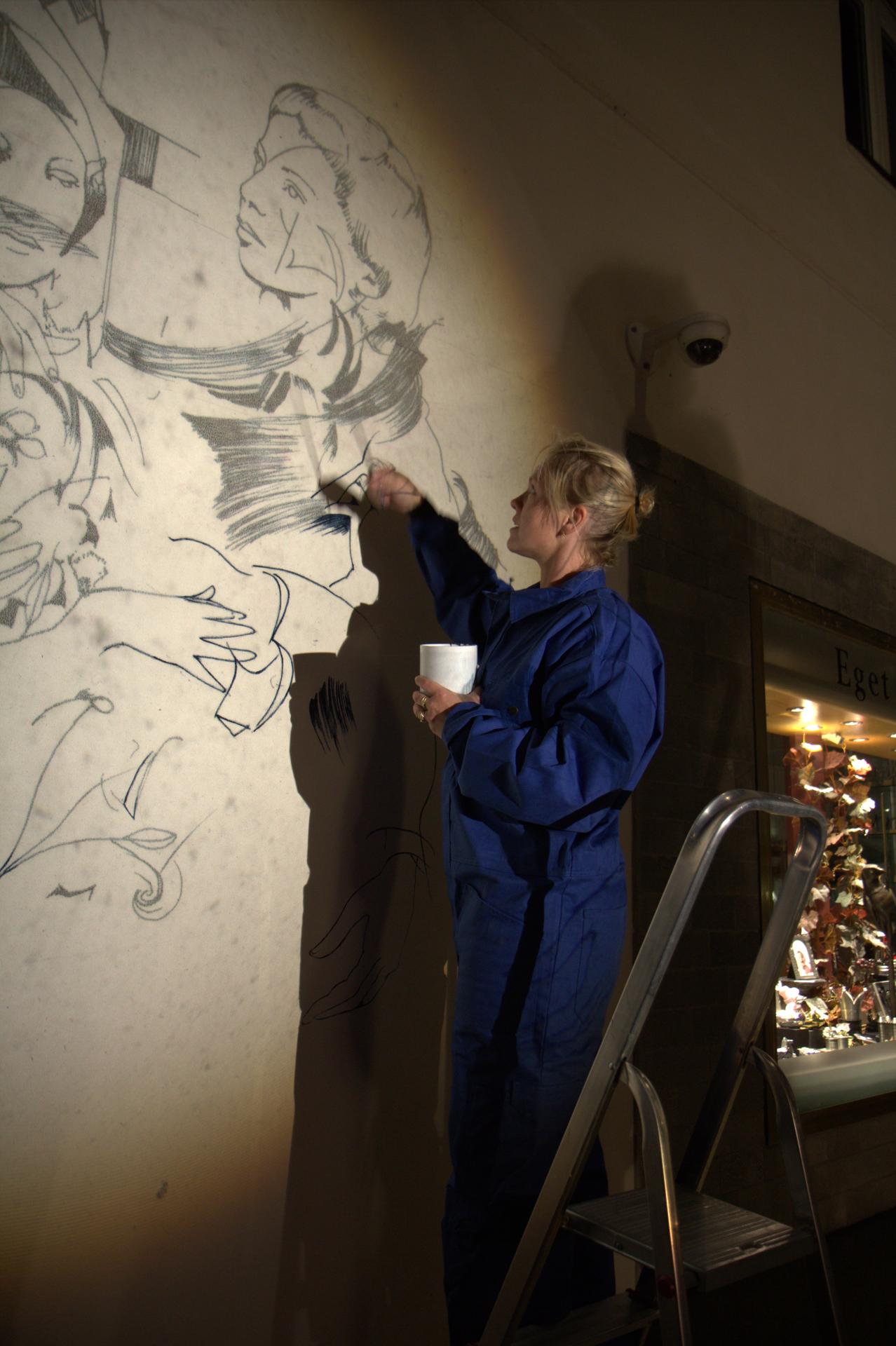Elisabeth 2014 is inspired by the mythological saga of the Catholic saint Elisabeth of Thuringia, who inspired the naming of the Elisabeth Hospital in Holbæk, which was run by German nuns from 1931 to 1974.
Elisabeth of Thuringia was said to have been a Hungarian princess, married into the house of Wartburg. She defied the wishes of the court by doing everything she could to help the poor. Caught smuggling bread out of the castle one day, and asked to show what she was hiding under her cape, her bread was turned into roses through divine intervention.
Cathrine Raben Davidsen interprets this legend in her black-and-white mural, mixing abstract and figurative elements into a composition, reminiscent of a stream of consciousness or a dream, where past and present, memory and fantasy glide in and out among one another.
Besides the roses of the myth and the caring hands of the nuns, the work also shows a vertical slit in the “canvas” to represent the opening of Elisabeth’s cape and a passage back to the past. The work also features two female portraits: one a partially profiled torso with a contemporary expression somewhat “pulled clear” of the interwoven elements; the other a female face —lodged in history in a section of Holbæk’s architecture— drawn in a style pointing back to the Renaissance. A reference we also find in the five Leonardo da Vinci-inspired hand studies of the work.
b. 1972 in Copenhagen, where she lives and works.



